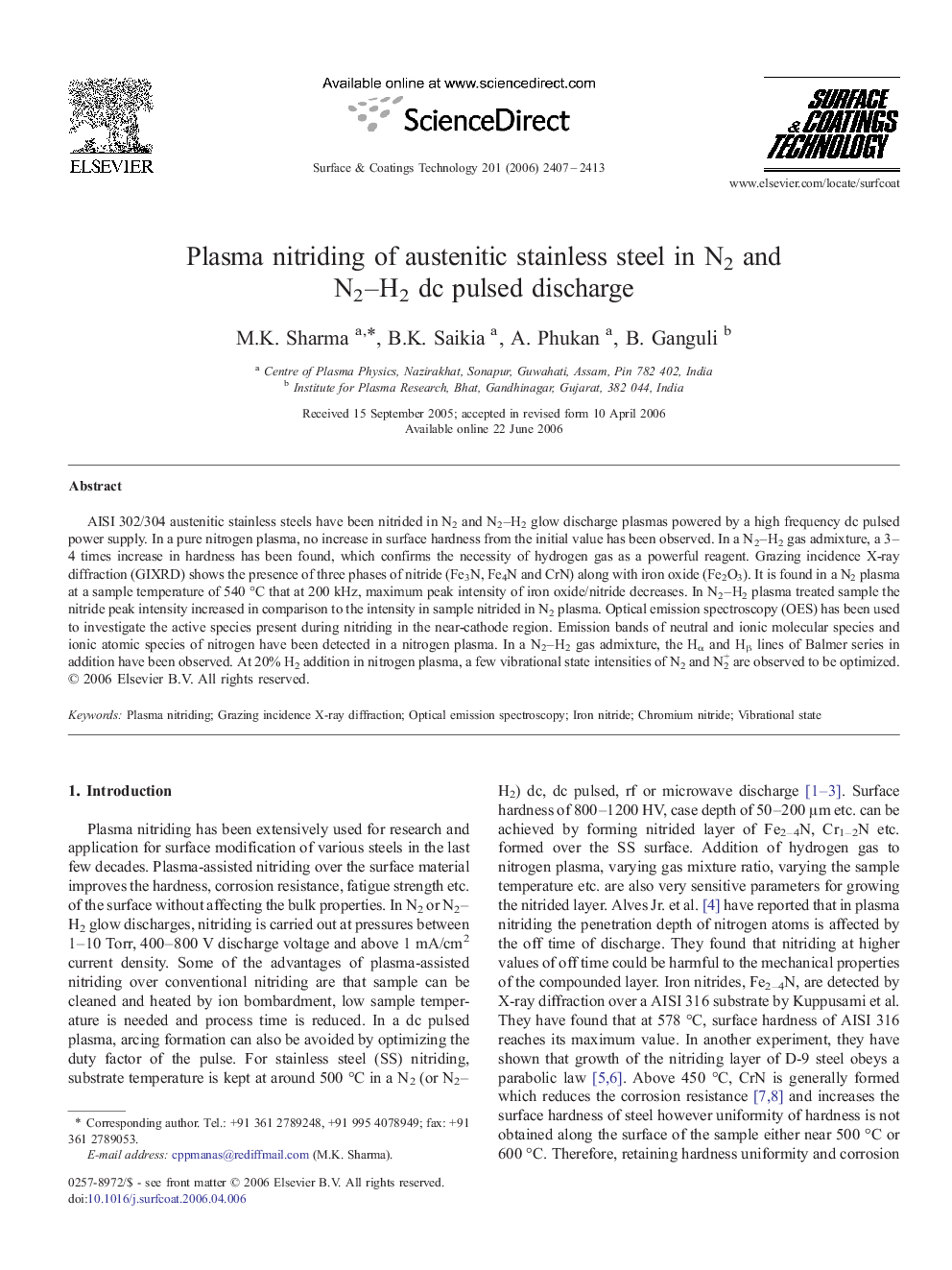| Article ID | Journal | Published Year | Pages | File Type |
|---|---|---|---|---|
| 1663341 | Surface and Coatings Technology | 2006 | 7 Pages |
AISI 302/304 austenitic stainless steels have been nitrided in N2 and N2–H2 glow discharge plasmas powered by a high frequency dc pulsed power supply. In a pure nitrogen plasma, no increase in surface hardness from the initial value has been observed. In a N2–H2 gas admixture, a 3–4 times increase in hardness has been found, which confirms the necessity of hydrogen gas as a powerful reagent. Grazing incidence X-ray diffraction (GIXRD) shows the presence of three phases of nitride (Fe3N, Fe4N and CrN) along with iron oxide (Fe2O3). It is found in a N2 plasma at a sample temperature of 540 °C that at 200 kHz, maximum peak intensity of iron oxide/nitride decreases. In N2–H2 plasma treated sample the nitride peak intensity increased in comparison to the intensity in sample nitrided in N2 plasma. Optical emission spectroscopy (OES) has been used to investigate the active species present during nitriding in the near-cathode region. Emission bands of neutral and ionic molecular species and ionic atomic species of nitrogen have been detected in a nitrogen plasma. In a N2–H2 gas admixture, the Hα and Hβ lines of Balmer series in addition have been observed. At 20% H2 addition in nitrogen plasma, a few vibrational state intensities of N2 and N2+ are observed to be optimized.
